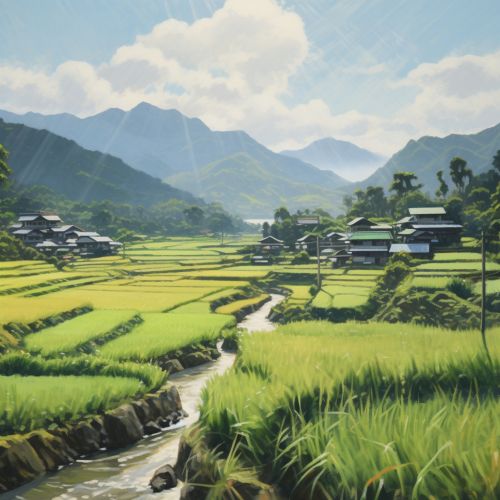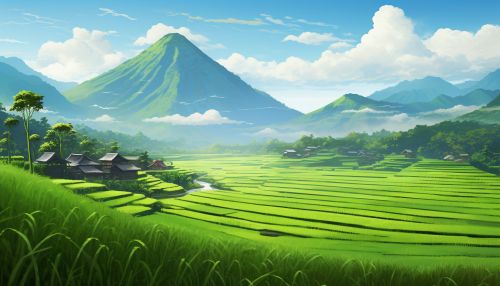Agriculture in Asia
Overview
Agriculture in Asia encompasses a wide range of environments, crops, and methods. From the rice paddies of Southeast Asia to the wheat fields of Western Asia, agriculture is a critical part of the economy, culture, and livelihood of many Asian countries. This article will delve into the various aspects of Asian agriculture, including the types of crops grown, the methods used, and the challenges faced by farmers in the region.


Types of Crops
Asia is home to a diverse array of crops, many of which are staples in the diets of the region's inhabitants. These include, but are not limited to, rice, wheat, maize, soybeans, and millet.
Rice
Rice is the most widely grown crop in Asia, particularly in the eastern and southern parts of the continent. Countries like China, India, and Indonesia are among the world's top rice producers.
Wheat
Wheat is another important crop in Asia, especially in the western and central regions. Countries such as Kazakhstan, Iran, and Turkey are significant wheat producers.
Maize
Maize, or corn, is primarily grown in the northern and western parts of Asia. China is the largest producer of maize in Asia, followed by India and Indonesia.
Soybeans
Soybeans are a major crop in East Asia, particularly in China, which is the world's largest producer. Soybeans are used in a variety of food products, including tofu, soy milk, and soy sauce.
Millet
Millet is a staple crop in many parts of Asia, particularly in arid and semi-arid regions. It is a hardy crop that can withstand dry conditions and poor soil quality, making it an important food source in areas where other crops may not thrive.
Agricultural Methods
Agricultural methods in Asia vary widely depending on the region, the type of crop, and the resources available. Some of the most common methods include terrace farming, irrigation, and Green Revolution techniques.
Terrace Farming
Terrace farming is a method of growing crops on steep or hilly terrain. It is commonly used in East and Southeast Asia, particularly in regions where rice is grown.
Irrigation
Irrigation is a crucial component of agriculture in many parts of Asia, particularly in arid regions where rainfall is scarce. It involves the artificial application of water to soil or land to assist in the growth of crops.
Green Revolution Techniques
The Green Revolution refers to a series of research, development, and technology transfer initiatives that occurred between the 1940s and the late 1970s. It introduced high-yielding varieties of wheat and rice, chemical fertilizers, and irrigation techniques that significantly increased agricultural production in Asia.
Challenges
Despite the importance of agriculture in Asia, farmers in the region face numerous challenges. These include climate change, soil degradation, water scarcity, and pests and diseases.
Climate Change
Climate change poses a significant threat to agriculture in Asia. Rising temperatures, changing rainfall patterns, and increased frequency of extreme weather events can negatively impact crop yields.
Soil Degradation
Soil degradation is a major issue in many parts of Asia, particularly in regions where intensive farming practices have depleted the soil's nutrients. This can lead to decreased crop yields and increased vulnerability to pests and diseases.
Water Scarcity
Water scarcity is a growing concern in many parts of Asia, particularly in arid regions. It can lead to reduced crop yields and increased competition for water resources.
Pests and Diseases
Pests and diseases can have a devastating impact on crop yields. Farmers in Asia often struggle with pests like locusts, rodents, and various crop diseases.
